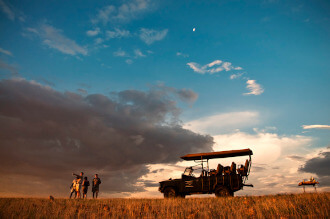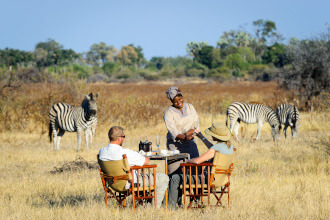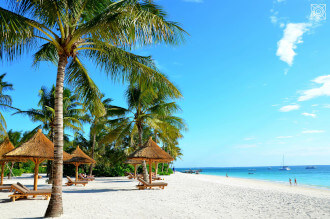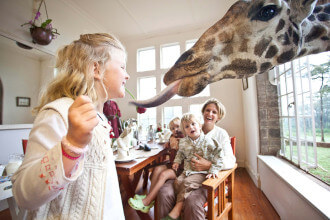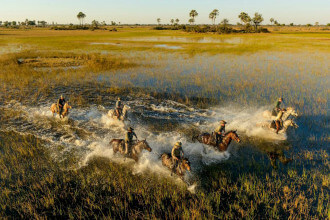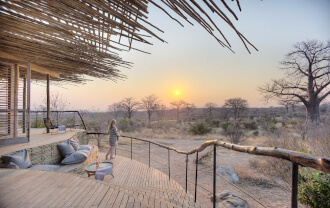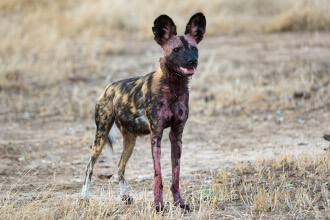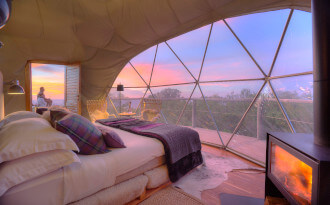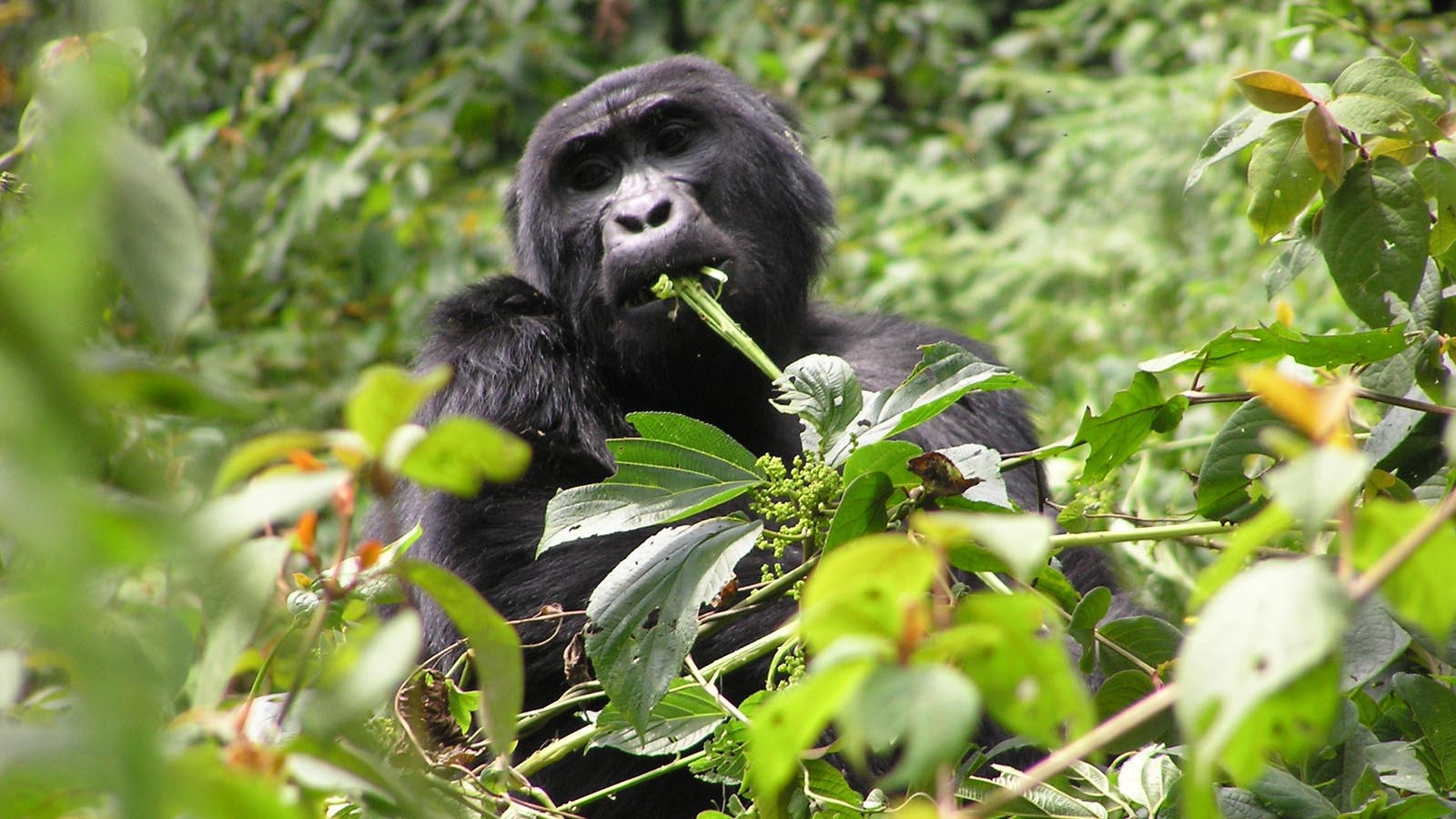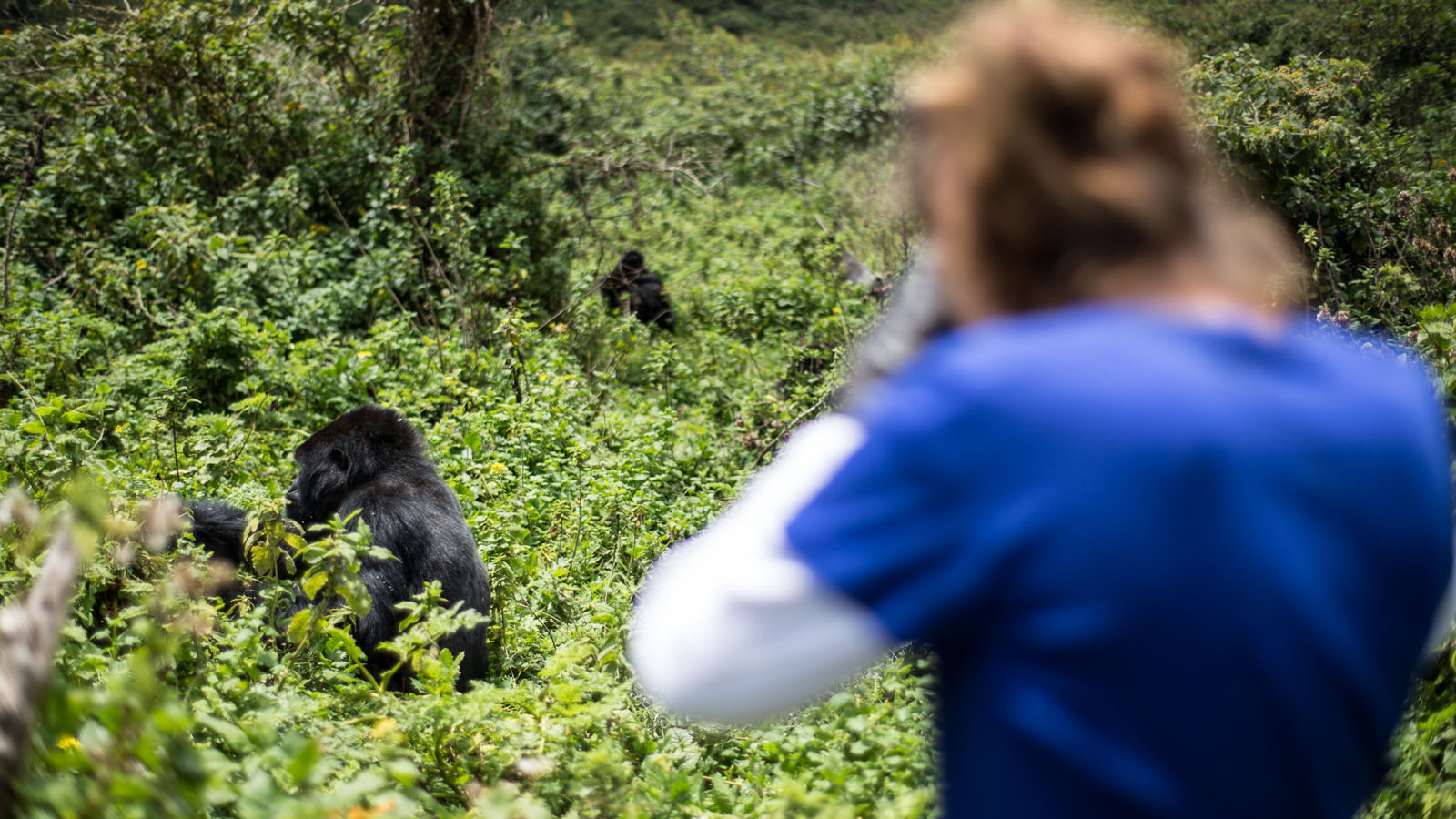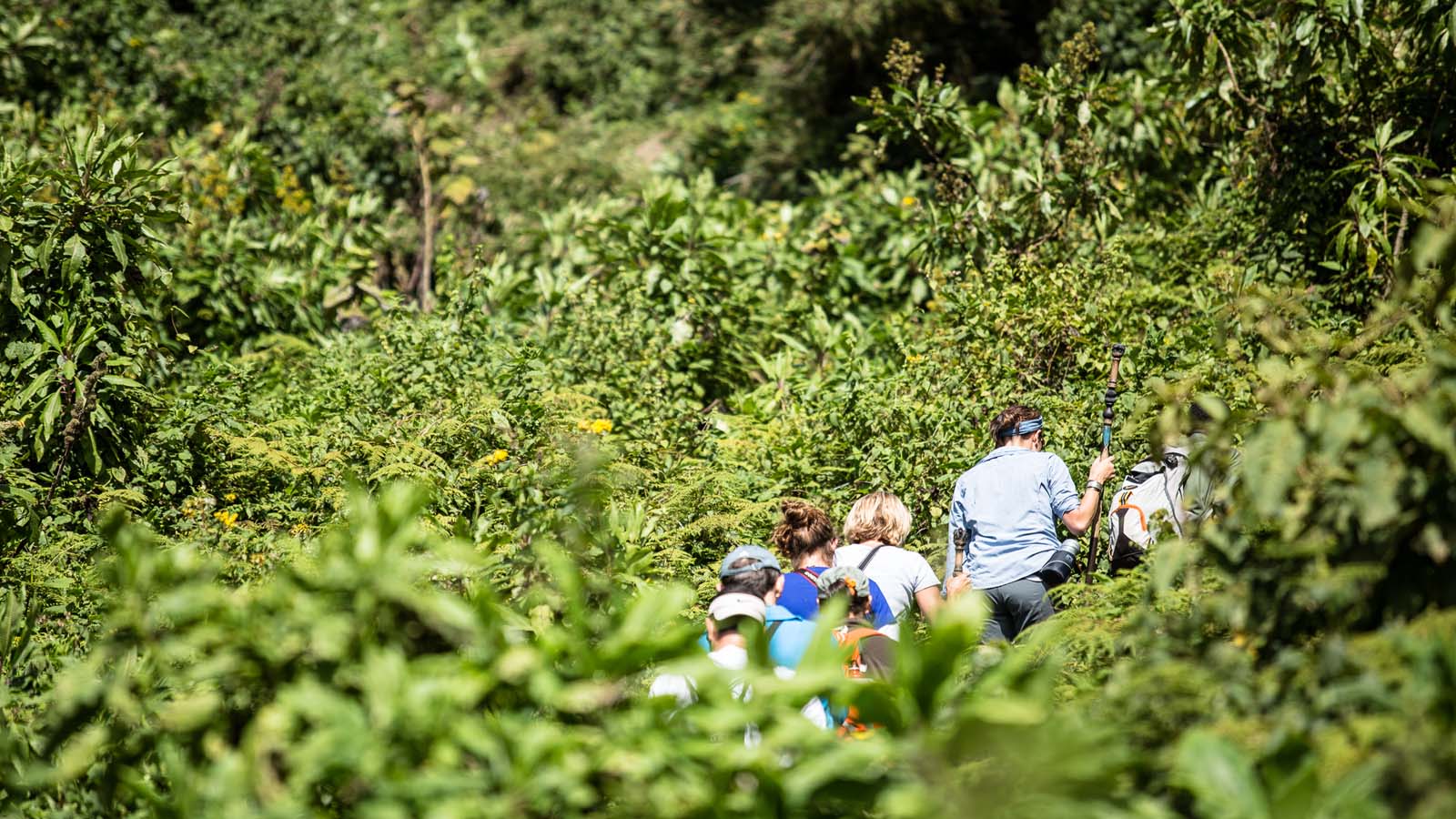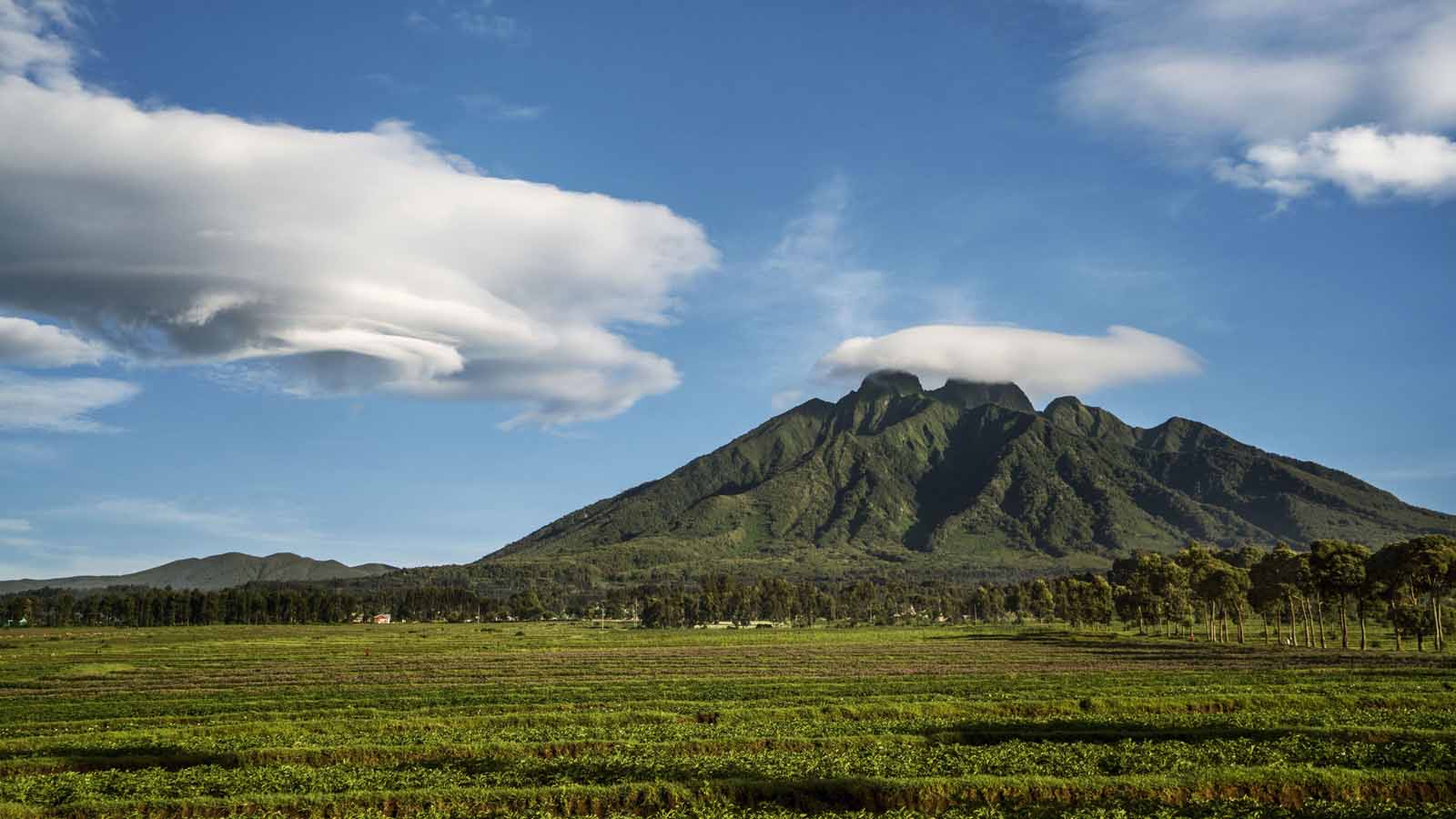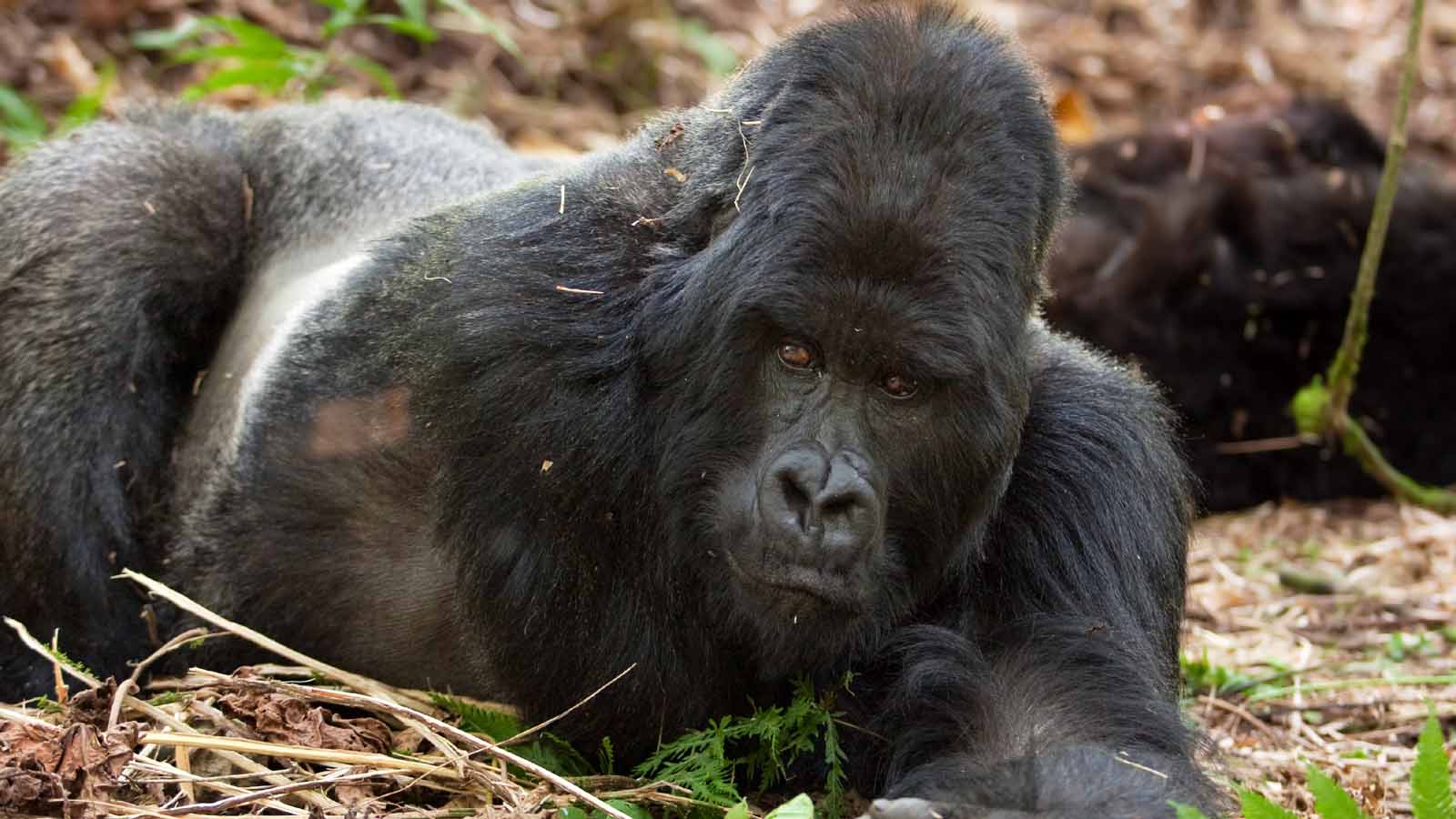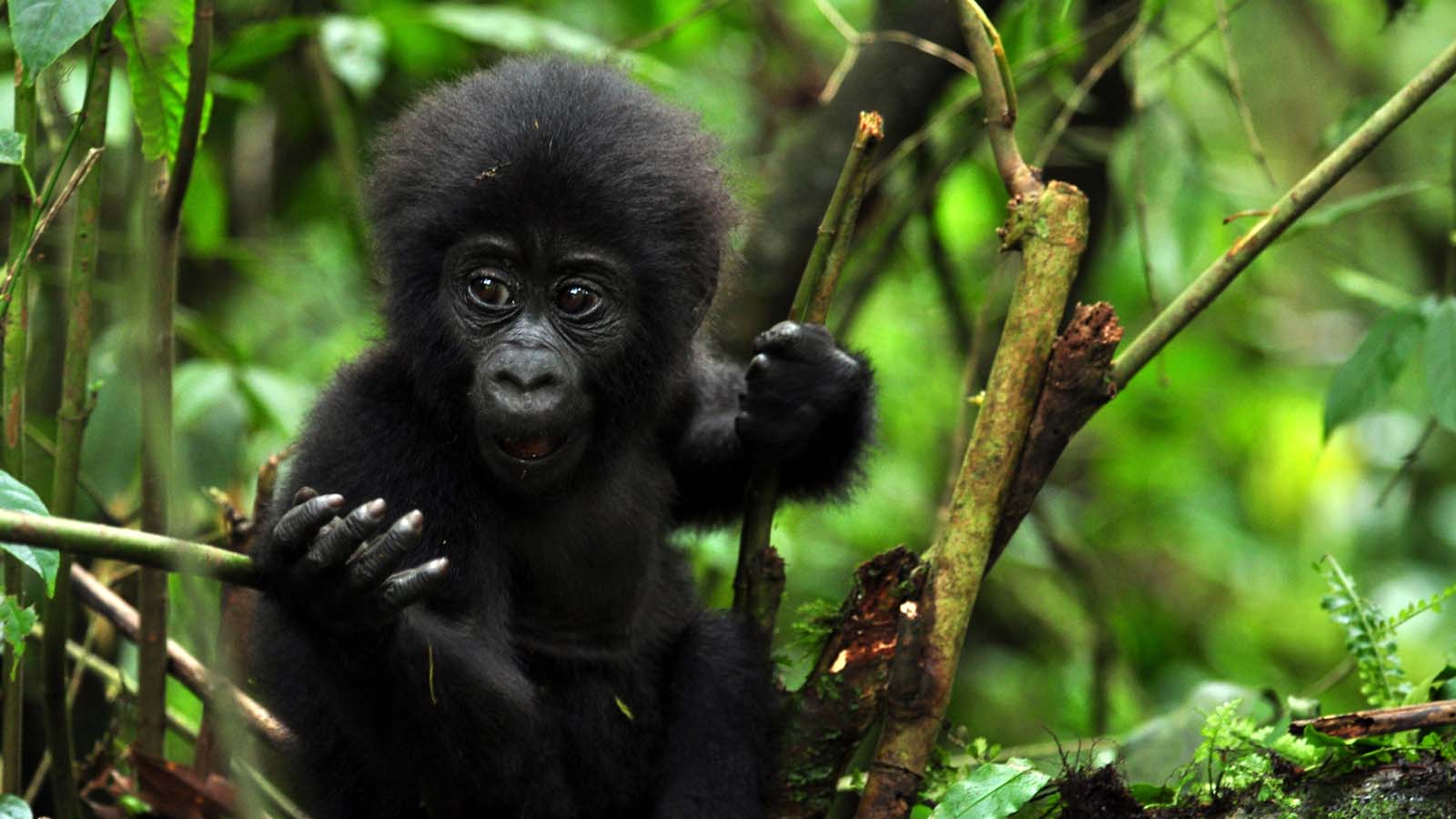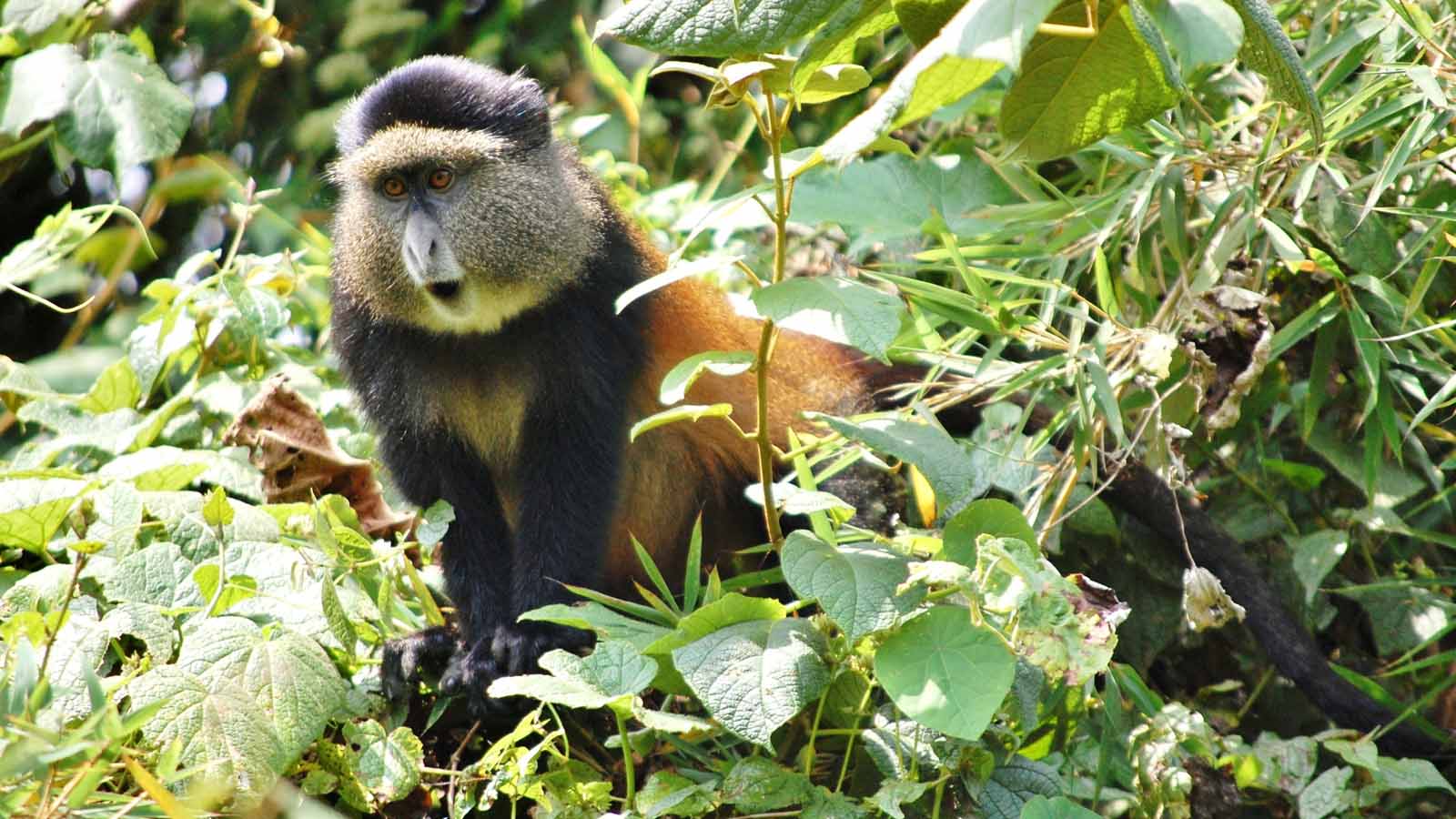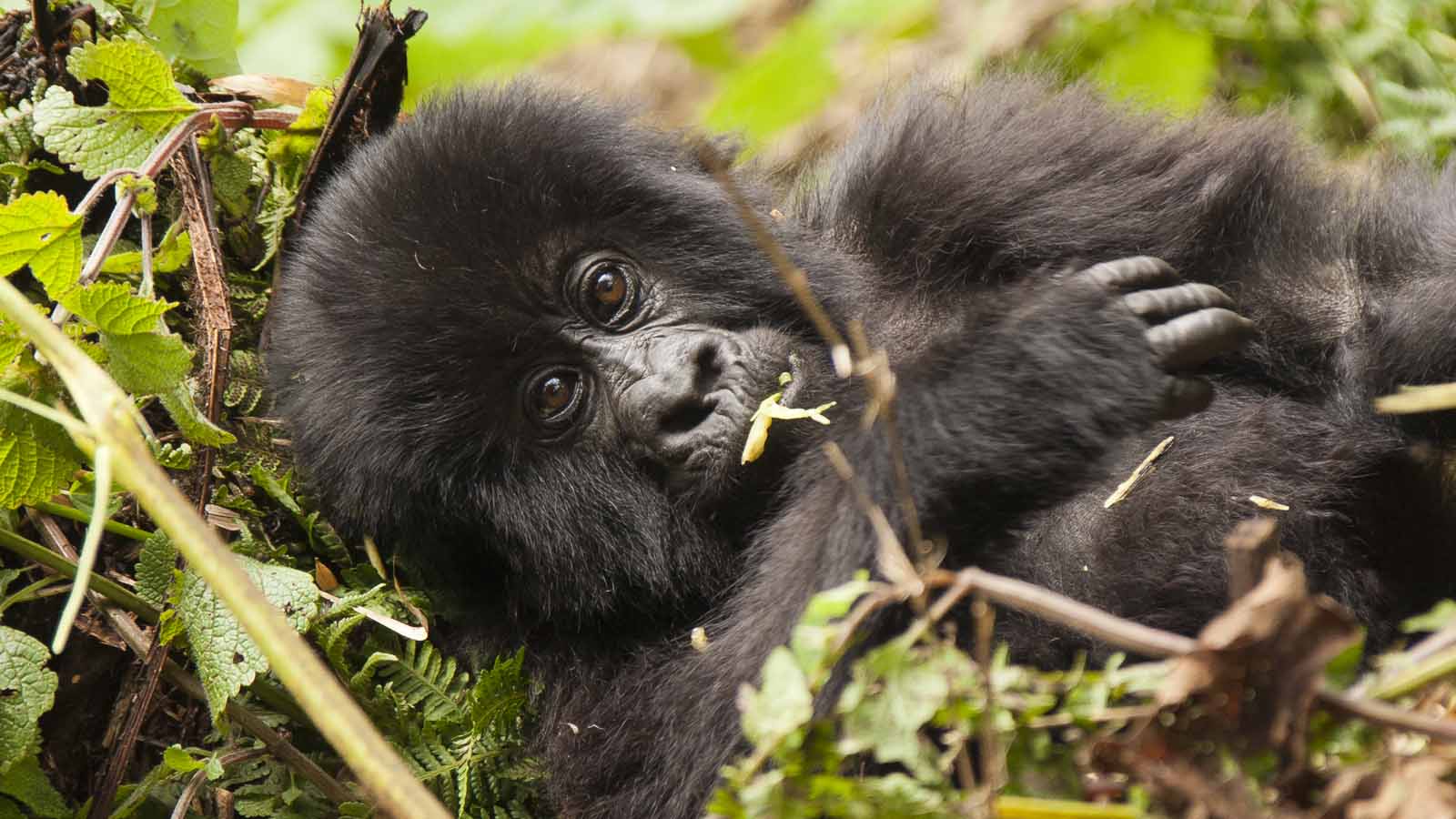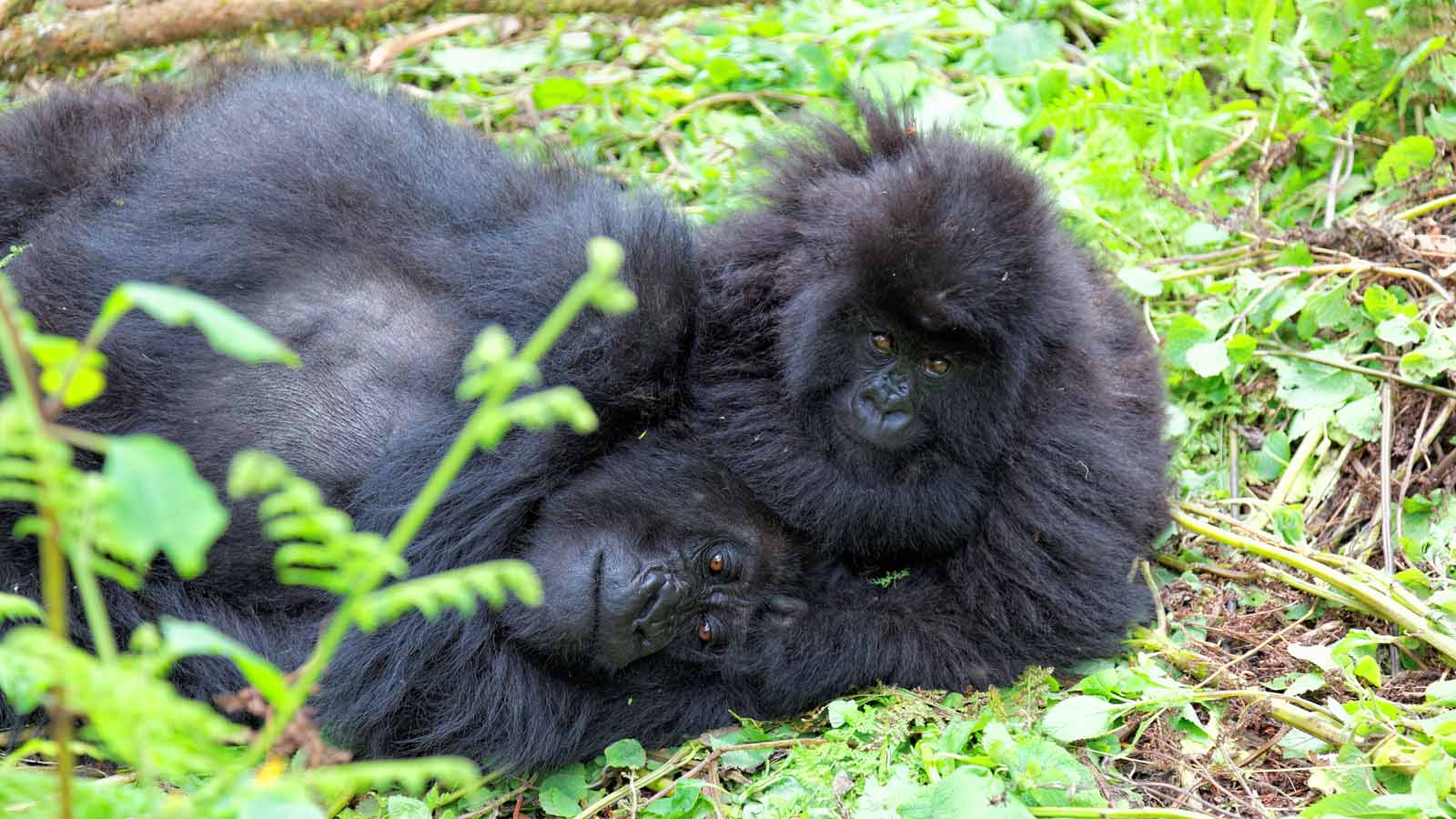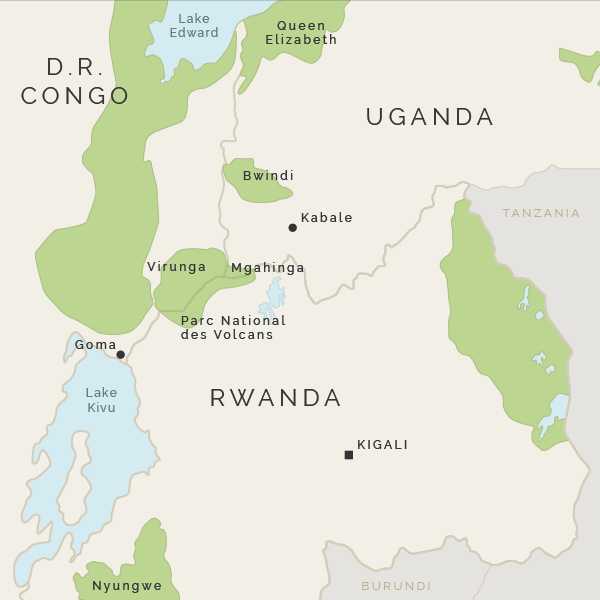Our clients also like
GORILLA TREKKING RWANDA - GUIDELINES
Gorillas tend to move around a lot and their home ranges often overlap. For this reason, one group cannot be said to be easier to track than another. For a number of years these groups have undergone an extremely delicate process that has gradually made them used to the presence of humans, and allowed a few privileged visitors to interact with them briefly in the wild.
The gorillas are by no means tame. They are completely wild animals, which even now tolerate human presence for an hour a day at most. Experienced guides will accompany you on your tracking, many of who have been involved in the habituation process themselves. These guides will brief you in detail on your arrival on the various aspects of ‘gorilla etiquette’, but the information contained in this set of guidelines is to help you arrive for your track well prepared and ready to enjoy this unique opportunity to the full.
Visitors may track as many days as they like, on purchase of the required number of gorilla permits. The permits are in extremely short supply, and are often booked as much as 18 months in advance. Only persons over the age of 15 are allowed to track the gorillas.
Gorilla tracking is a year-round activity, with no season as such. The rain forest is moist, and it rains very often, even in the dry season. Tracking commences every morning from the park head-quarters at 8.30am. There is a daily maximum of 8 visitors to each gorilla group, and each group is accompanied by a guide and by porters who will carry your shoulder pack for you. The gorillas cover large distances overnight, and they are never constantly in one area. The guides will use their knowledge of the gorillas’ habits and information from the previous day to locate the group’s whereabouts.
Because of this, the time taken to track the gorillas varies enormously, from as little as half an hour to as much as 9 hours before returning to camp. The terrain is extremely difficult, with steep slopes (often steeper than a flight of stairs) covered in dense vegetation that gives the park its name. In addition, the altitude means participants do need to be physically fit to enjoy the track.
Once the gorillas are located, your group will be allowed a maximum of one hour with them. After this, you will return to the park headquarters and your camp.
For a summary of the Best places to stay in Volcanoes National Park, please follow this link.
Illness when gorilla trekking
Do not try to track the gorillas if you know you have an illness that is contagious. You may pass the disease on to the gorillas with disastrous results. If you suspect that you have such an illness, report it to head office or to the guide at the park headquarters. There is a good chance that you will be refunded the cost of your gorilla permit. If you do not disclose your illness, and your guide detects it, you will be barred from tracking, and your permit will definitely not be refunded. Illnesses in this case include colds, coughs, diarrhea and influenza.
General Guidelines for Gorilla Trekking
Tracking conditions differ greatly according to the location of the gorillas, so the exact level of difficulty for a specific trek is impossible to define in advance. On an excursion, it is entirely possible that you will find the gorillas quite quickly and be back at your hotel for lunch. It is also entirely possible that you will have to hike three or four hours (or sometimes even longer) each way and will make it back to your hotel just before dark.
Because it is impossible to predict the length and difficulty of any single tracking excursion, this program should be not attempted by anyone who is not in good physical condition. Tracking is likely to involve scrambling through, over, and under dense undergrowth with nettles, barbed vines, and bamboo thickets. Correct footwear and clothing are essential.
Travellers with physical disabilities and those who require frequent or ongoing medical attention should advise us of their health situation at the time of booking (or at the time such a situation occurs should this be after the reservation is made).
As you set off from the starting point, the trackers will first lead you to the spot where the gorilla family was seen the previous day and look for clues as to the direction the group may have traveled since it was last observed. Your group’s lead tracker will have his ‘own’ gorilla family, which he visits each day and whose home range and travel routes are familiar to him. All trackers are experienced in looking for signs of the gorillas, such as footprints, dung, chewed bamboo and celery stalks, and abandoned nests from the previous evening. Gorillas soil their nests and then abandon them to build new ones each night, and trackers are able to tell the age of the nests as well as which group made them. On days of heavy rain, it is more difficult to distinguish signs of the gorillas and the age of the nests.
Gorillas do not live in the most accessible terrain, and some of it is virtually impenetrable. They prefer secondary growth vegetation with plenty of goof plants near the ground and think nothing of climbing extremely steep slopes to get it. Unfortunately, this means that tracking gorillas can be difficult for humans. If the gorillas you are tracking have wandered deep into the forest, it is entirely possible that the trek to find them will take three or four hours (or sometimes even longer) in each direction. Additionally, you may have to overcome mud, stinging nettles, and some areas of elevated vines where your feet may not touch the ground. The trek can be difficult in both directions (there and back).
Trackers generally do allow time to stop and rest along the trail. However, they tend to hike at a steady, somewhat upbeat pace throughout the excursion, for they must be mindful of the time to ensure that you will be able to reach the gorillas, spend a full hour with them, and make it back down the trail before dark.
You will probably smell the gorillas before you actually see them. When you reach them, the tracker will move forward, making soft smacking and groaning sounds with his mouth to assure the group that friends are approaching. Although gorillas make very few vocalizations, this sound of reassurance is one that family members often use with each other.
If your trek to find gorillas has not been unusually long, you are likely to visit them during their long midday rest and play period. At this time of day, the dominant male (usually a silverback) generally lounges on the ground or against a tree while youngsters roll in the vegetation and climb on trees, vines, and each other. Females nurse and play with their infants. Occasionally, a curious youngster may approach you or someone in your group. Though it is tempting to touch, this is STRICTLY forbidden.
Your tracking group will be instructed to stay together and crouch down while observing the gorillas so that the dominant male can see you at all times and the family does not feel threatened, surrounded or overwhelmed. Never stare directly into the eyes of a gorilla, for a fixed stare is as aggressive to them as it is to most humans. Although you may find a gorilla looking directly at you, you maintain a subservient stance and look at it sideways or from a lower height.
Sometimes, as a release tension or a display to the rest of the group, a male gorilla may charge and beat his chest, tearing up vegetation and hurling his tremendous frame directly at your tracking group. Despite the temptation to run, you must stand your ground, maintain a subordinate, crouching position, and do your best not to flinch - for the gorilla will stop before actually reaching you and calmly return to his previous location, glancing back at you with smug satisfaction. Such displays may turn savage when used between males of different gorilla families but are simply bluffs when used with human observers on tracking excursions to habituated gorilla groups.
Your tracking group will spend up to one hour with the gorillas on each tracking excursion. This time limit is carefully observed and protects the gorillas from undue stress. If your group were to stay longer than this, the gorillas would probably end the visit themselves, by simply leaving. Although they are getting used to being visited regularly and are curious about their human visitors, they are accustomed to one hour visits, and their intensely shy and private nature will reassert itself in the end.
In the event a gorilla tracking participant is unable to complete a tracking excursion to the gorillas, he or she will either be allowed to immediately return to the base of the trail with a porter OR the participant will be asked to remain in place with a porter while the group continues its track of the gorillas, rejoining the rest of the group on its way back to the base of the trail.
Please keep in mind that gorillas are shy, wild animals. In addition, tracking is a relatively new operation; and the gorilla families here have only recently been habituated to human visitors. At the start of the tracking day, there is no way of telling exactly where the habituated gorilla families are (even though trackers are very skilled at looking for signs of gorillas and their paths of travel). With newly-habituated gorilla families there is a greater chance that even experienced trackers will not be able to locate them on a particular tracking day. Also, because gorillas are wandering animals that favor areas of dense vegetation, consistent, clear viewing at close range cannot be guaranteed.
Gorilla Trekking regulations
It is important that all gorilla tracking participants familiarize themselves with the following regulations and rules of conduct:
- You must at all times, follow the instructions of your guide. He is in contact with gorillas every day and understands them well. Always remain in a quiet, compact group behind the guide, who will attempt to position you in such a way that the dominant male of the group can see you at all times.
- If the dominant male gorilla (usually a silverback) approaches very closely, or if he charges, it is very important that you do not move backwards. Remain exactly where you are, look downward, and adopt a submissive, crouched posture. NEVER make any sudden moves or loud noises in the presence of gorillas. If a young gorilla approaches, NEVER (under ANY circumstances) make any move to touch it. Your guide, in certain instances, may take steps to discourage a youngster from touching you, as this could create a threatening situation with the dominant male.
- If a gorilla stares at you, look away or down.
- Avoid taking an excessive number of photographs, and NEVER use a flash when photographing the gorillas.
- Only visitors in good health AT THE TIME OF THE EXCURISON will be permitted to track gorillas, as gorillas are susceptible to colds and other respiratory diseases transmitted by humans. All visitors must be physically fit and capable of enduring a walk of several hours in difficult terrain (as previously described)
- Each gorilla family may be visited only once each day, during the morning hours
- At this time, all gorilla visits are limited to a maximum of eight persons per gorilla family for a maximum length of one hour. Due to the already limited number of persons allowed to visit the gorillas each day, it is not possible to do gorilla tracking on a private basis.
- Smoking, eating, and / or drinking are not permitted within 200 meters of a gorilla family.
- It is prohibited to destroy any vegetation unnecessarily and to make open fires in the national parks and reserves. The flora and fauna of national parks and reserves are strictly protected. All visitors must carry their own litter with them out of the park or reserve, leaving NOTHING behind.
- Children under the age of fifteen cannot be accepted on gorilla tracking excursions.
As mentioned previously, travelers should be in excellent physical condition and be physically and mentally prepared to walk long distances over rough terrain if that is where the search for gorillas takes them.
For other astonishing (and ethical!) animal encounters around Africa please see our blog post.
Client Reviews
Client Reviews
Bisate - Reviews
This lodge was over the top, and we are so pleased to have stayed there. We had enjoyed our experiences with Wilderness Safari in Botswana, and we were thrilled again with this new site.
We were pleased to each plant a tree at the lodge location, and to visit the local community one afternoon. The gorilla experience was just fantastic, and to be remembered for a lifetime. The first day was an easy walk while the second day was quite tough, with the local team clearing way through vines and nettles with the machete, all the way to 11,000 ft. We are very glad to have followed your advice and booked two days with the gorillas ! We still have to sort our many videos and pictures!
Virunga Lodge - Reviews
Virunga lodge was spectacular and the food was outstanding, everyone was raving! And the birding there just hanging out at the lodge...sunbirds endemic to the Albertine Rift were just common garden birds!
Sabyinyo - Reviews
We found Rwanda to be a beautiful country and were absolutely blown away by the Virungas, and, of course, the gorillas. Pictures and stories cannot convey the sense of being close to these magnificent and gentle mammals in their natural setting. The Sabyinyo Silverback Lodge was a great place to stay. The fireplace in our room was used often. We saw the Titus and Sabyinyo groups and absolutely enjoyed our 60 minutes with each. One evening at the lodge, we met a young woman who is the gorilla doctor. that was a treat. Our driver during our stay in Rwanda (Theogin) was great and we highly recommend him to others

